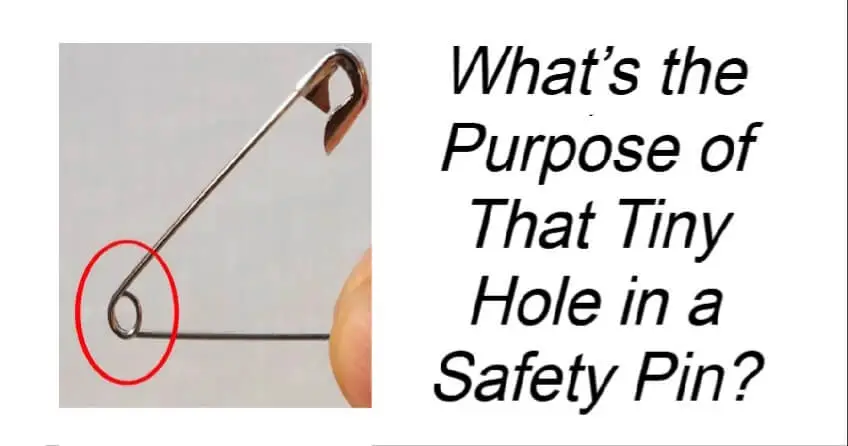What’s the Purpose of That Tiny Hole in a Safety Pin?
That tiny hole near the clasp of a safety pin isn’t just a random manufacturing feature—it actually has a clever and practical use.
It’s designed to help you guide things like elastic, ribbon, or drawstrings through a casing (like the waistband of pants, a hoodie, or a fabric tunnel in a sewing project). Here’s how it works:
- Thread a piece of string, yarn, or cord through the hole.
- Tie or secure it so it won’t slip out.
- Insert the safety pin into the fabric casing and begin feeding it through.
- The attached string gives you extra control—you can pull the pin back easily if it gets stuck or push it through tight spaces without losing your grip.
In short:
🔹 The hole acts as an anchor point for better control.
🔹 It prevents the pin from getting lost inside the fabric.
🔹 It makes tricky threading jobs way easier and faster.
It’s a small feature, but once you start using it, you’ll wonder how you ever managed without it!
Old-School Sewing Tips Worth Bringing Back
1. Use Dry Soap to Mark Fabric
No tailor’s chalk or fabric pen in sight? A sliver of dry soap works perfectly. It leaves a visible mark that washes out easily—and won’t damage your fabric. Smart, simple, and budget-friendly.
2. Reinforce Seams with Backstitching
Worried about seams unraveling over time? End each stitch line by sewing backward a few centimeters. This technique—known as backstitching—locks the seam in place and adds long-term durability to any project.
3. Pin Diagonally for Better Hold
Instead of pinning at a 90-degree angle, try pinning diagonally along the seam. This gives the fabric a firmer hold and makes the pins easier to remove as you sew—helping keep your lines straight and smooth.
4. Create Strong Knots with a Simple Wrap
A neat, secure knot is key to a professional-looking finish. Try this classic trick: wrap the thread around the needle several times before pulling it through. You’ll end up with a small, tidy knot that won’t budge.
5. Beeswax
Just run your thread across a block of beeswax before you start stitching. This vintage trick, passed down through the years, strengthens thread, reduces fraying and tangles, and creates smoother, more durable seams. The result? Cleaner finishes and a more enjoyable, frustration-free sewing experience.
You’ve just read, What’s the Purpose of That Tiny Hole in a Safety Pin. Why not read Manager Had To Hire A New Employee.

